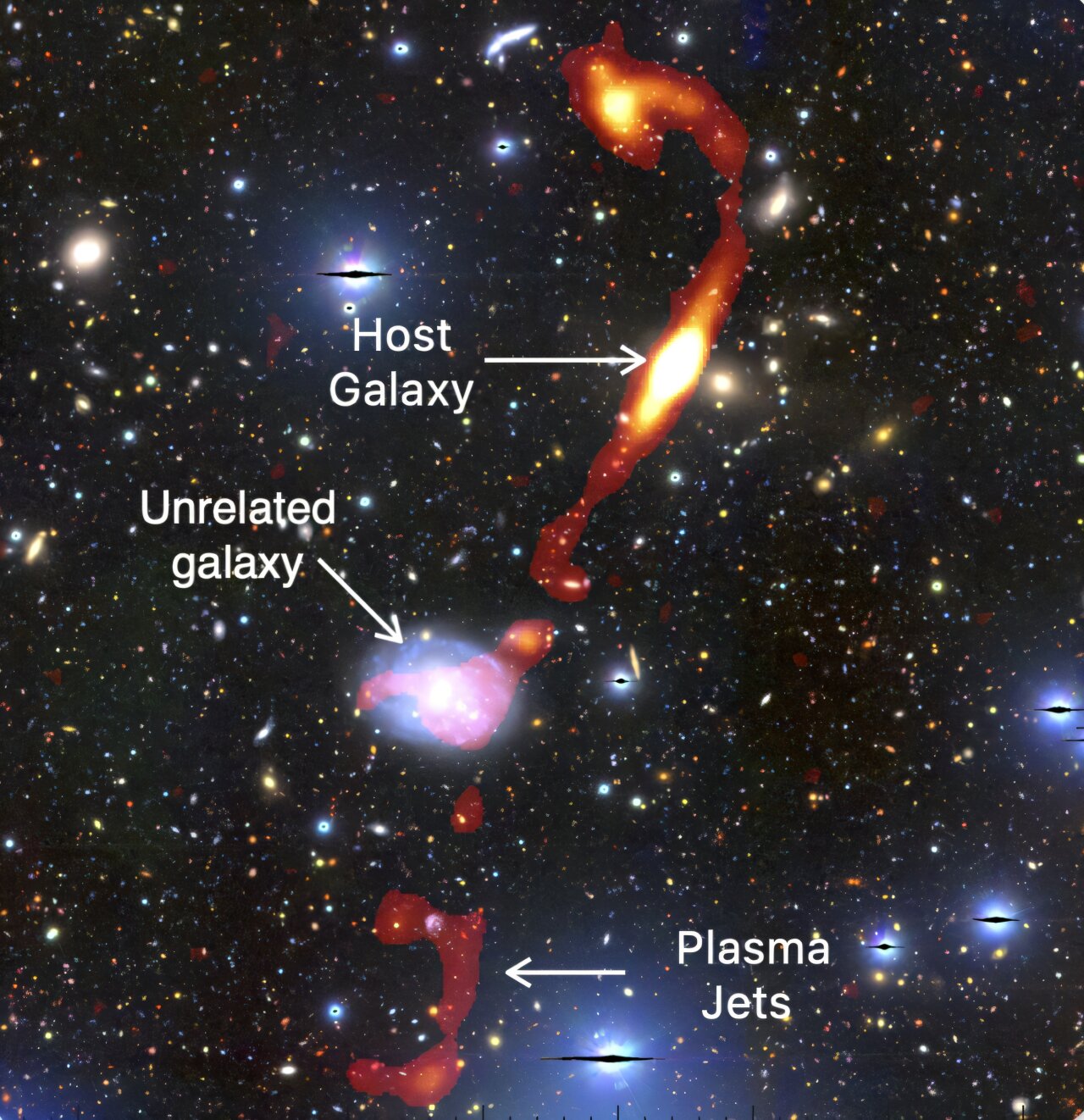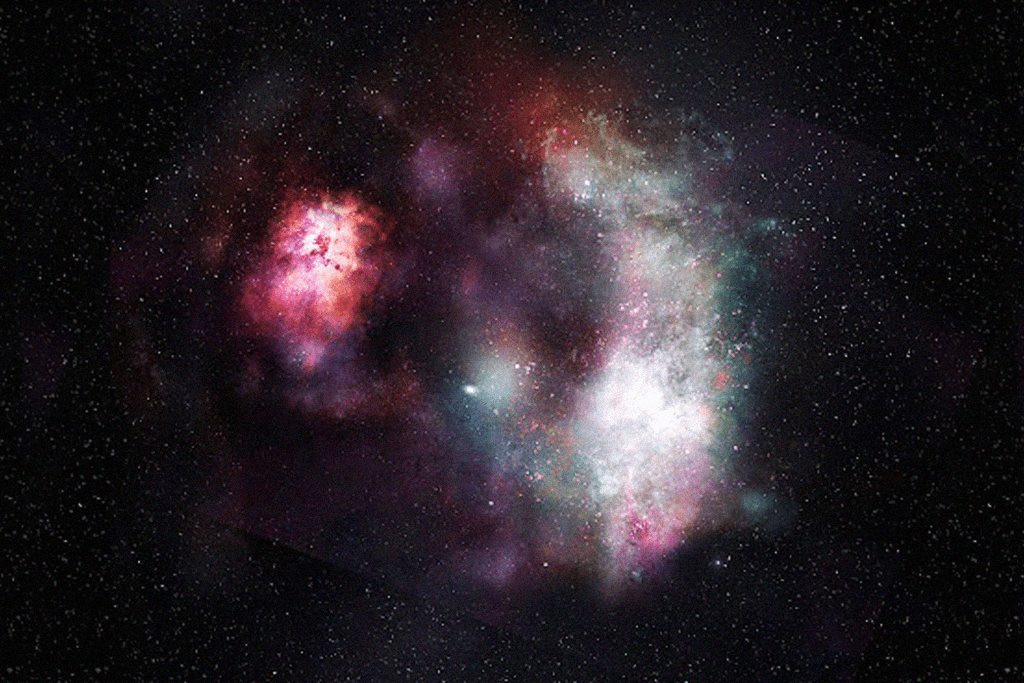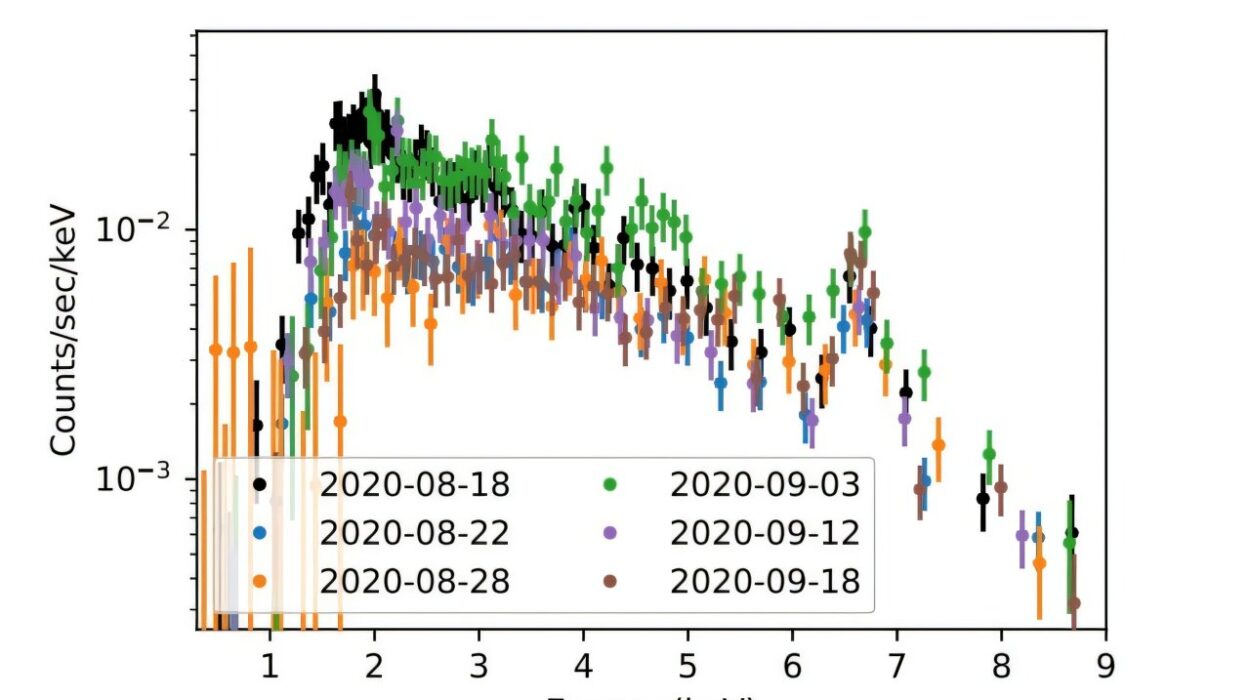Astronomers have detected a remarkable new giant radio galaxy (GRG) with plasma jets that span 32 times the size of our Milky Way galaxy. This cosmic giant, with a span of 3.3 million light-years from end-to-end, was identified by the South African MeerKAT telescope. Nicknamed Inkathazo, meaning “trouble” in the African languages of Xhosa and Zulu, this colossal galaxy poses new puzzles about the universe’s most massive structures. The findings, published in the Monthly Notices of the Royal Astronomical Society, could lead to crucial insights into the origin and evolution of some of the largest known objects in the cosmos.
What Are Giant Radio Galaxies?
Giant radio galaxies are among the most mysterious and massive structures in the universe. These galaxies produce enormous jets of plasma—ionized gas—emanating from the supermassive black holes at their cores. These jets extend across intergalactic space, with some stretching millions of light-years. The plasma within the jets emits radio frequencies, making them detectable through powerful radio telescopes.
The size of these cosmic structures is staggering. Most giant radio galaxies’ plasma jets can extend up to 10 times the size of our own Milky Way. However, the recent discovery of Inkathazo eclipses this by a significant margin, presenting a new class of cosmic behemoths.
Until recently, the existence of such enormous radio galaxies was considered rare. For years, astronomers observed these structures but found them relatively scarce. However, the recent development and deployment of advanced radio telescopes, such as MeerKAT, have challenged this notion. These cutting-edge instruments have begun to uncover a wealth of previously unknown giant radio galaxies, allowing for a reimagining of how common these phenomena could be in the universe.
The Discovery of Inkathazo
The immense size and peculiar features of Inkathazo have made it a focal point of study. According to Kathleen Charlton, a master’s student at the University of Cape Town and the lead author of the recent study, this discovery is both “exciting and unexpected.” The sheer scale and unusual characteristics of the galaxy’s jets left researchers in awe.

“Inkathazo doesn’t behave like other giant radio galaxies,” Charlton explains. “Its plasma jets are bent rather than extending straight across from one end to the other. This raised a lot of questions about the forces at play.”
The discovery of this enormous galaxy didn’t follow the typical patterns observed with previous GRGs. A striking feature of Inkathazo is its location at the center of a galaxy cluster. This environment—rich with other galaxies and cosmic material—should theoretically hinder the growth of a jet this large. It’s a paradox that has scientists questioning the role of environmental interactions in the formation and evolution of such extreme objects.
Named Inkathazo due to the perplexing nature of its features—”trouble” in both Xhosa and Zulu—this discovery marks a pivotal moment in the study of GRGs.
MeerKAT’s Role in the Discovery
The MeerKAT telescope played a central role in unraveling the mystery of Inkathazo. As one of the most advanced radio telescopes in the world, MeerKAT offers unparalleled resolution and sensitivity, able to detect and map distant cosmic phenomena in intricate detail.
“MeerKAT has opened up a new frontier for us in understanding cosmic giants like Inkathazo,” Charlton remarked. “Its ability to capture high-resolution data has completely transformed our approach to understanding these objects.”
Researchers used the powerful instrument to produce some of the highest-resolution spectral age maps ever created for giant radio galaxies. These maps helped track the aging process of plasma across different regions of the GRG, providing vital clues about the physical processes at work within the galaxy’s jets.
New Insights into Plasma Jets
The researchers’ investigations revealed unexpected intricacies in Inkathazo’s jets. Some of the electrons in these jets appeared to experience energy boosts that were not seen in other galaxies. Such fluctuations suggested the presence of other forces acting on the plasma—forces that are still not fully understood by scientists.
Dr. Kshitij Thorat, a co-author from the University of Pretoria, emphasized the complexity of the findings: “This discovery gives us a rare opportunity to study the physics of GRGs in remarkable detail. The results challenge our existing models, suggesting that there is still much we don’t know about plasma dynamics in these extreme cosmic environments.”
One possible explanation proposed by the team is that Inkathazo’s jets could be colliding with hot gases that exist in the space between galaxies in the cluster. These collisions could be causing energy fluctuations that further complicate the formation and evolution of the galaxy’s jet system.
Giant Radio Galaxies and Their Environment
What’s even more surprising about Inkathazo’s discovery is its location within a galaxy cluster. This is particularly intriguing because most GRGs have been found in isolation or in smaller groups of galaxies. But Inkathazo’s proximity to a galaxy cluster raises important questions about how the surrounding environment influences the development of giant galaxies and their jets.
Dr. Kshitij Thorat spoke on this: “The discovery of this GRG in a cluster environment opens up new avenues for research on the role of environmental interactions in these systems. The interaction between different galaxies within a cluster could play a pivotal role in the evolution and growth of GRGs.”
Other previously discovered GRGs tend to reside in more isolated settings, where their massive jets can grow freely. But clusters present a much more complex environment, filled with interactions among galaxies, gas, and dark matter, potentially inhibiting the expansion of plasma jets. Inkathazo’s success in overcoming such environmental challenges makes its case a highly intriguing one for astronomers.
Growing Catalogue of Giant Radio Galaxies
Inkathazo is not the only giant radio galaxy in its corner of the cosmos. When astronomers looked at the same region of sky with MeerKAT in previous years, they discovered other giant radio galaxies nearby. This patch of sky, known as the COSMOS region, has emerged as a treasure trove for discovering new and larger-than-usual galaxies. In fact, two additional giant radio galaxies were discovered in the same region, both of which had distinct features compared to the known examples.
“Finding Inkathazo was an unexpected bonus in a part of the sky we were already surveying. The fact that three GRGs can be found in a small patch of sky suggests that there are likely many more to discover in the southern hemisphere,” said Dr. Jacinta Delhaize, a researcher involved in the previous discovery.
This observation is just the beginning. With MeerKAT’s precise imaging capabilities and the upcoming development of the Square Kilometer Array (SKA), astronomers are poised to uncover even more cosmic behemoths in the near future.
What’s Next for Radio Astronomy?
The SKA, which will be fully operational by the end of this decade, promises to push the limits of current radio astronomy even further. The MeerKAT telescope has already shown us glimpses of what’s possible, but the SKA will be able to offer even more sensitivity and resolution, opening doors for greater discoveries.
“We are entering an incredibly exciting period for radio astronomy,” Dr. Delhaize remarked. “With MeerKAT already paving the way, the SKA will push these boundaries even further and bring us closer to solving many of the mysteries still surrounding these enigmatic cosmic structures.”
Conclusion
The discovery of Inkathazo, a giant radio galaxy with plasma jets 32 times the size of the Milky Way, marks a significant breakthrough in the field of radio astronomy. Found using South Africa’s MeerKAT telescope, this cosmic giant challenges existing models of galaxy and jet formation, especially due to its unusual location within a galaxy cluster and the perplexing behavior of its plasma jets. Researchers are now tasked with understanding the complexities of these phenomena, revealing how environmental factors and collisions could affect the growth of such massive structures. Inkathazo’s discovery is a testament to the power of advanced telescopes like MeerKAT, offering an exciting glimpse into the future of astronomical exploration. As the Square Kilometer Array (SKA) prepares for full operation, the study of GRGs and other large-scale cosmic structures will continue to expand, providing deeper insights into the fundamental workings of our universe.
Reference: K K L Charlton et al, A spatially resolved spectral analysis of giant radio galaxies with MeerKAT, Monthly Notices of the Royal Astronomical Society (2025). DOI: 10.1093/mnras/stae2543






